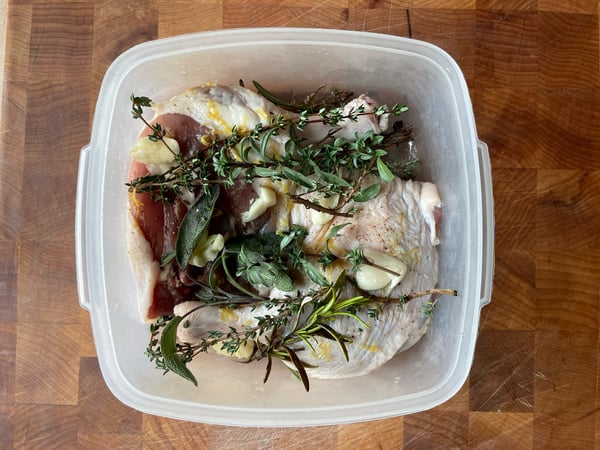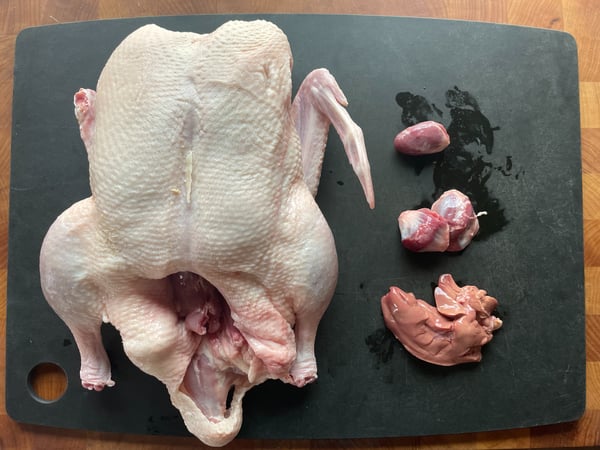In my experience, many people tend to think of French food as "fancy" food. It's true that a lot of classic French preparations are complex or labor intensive, and it's easy to think that because of this all French cooking is beyond the reach of the average home cook. But that's not true. There are a great many dishes in French cuisine that are not only achievable; they’re downright easy. Let's take a look at one of my favorites: duck confit.

But I’m getting ahead of myself. Let's start at the beginning. What exactly is duck confit? Typically duck confit is made from the legs of a duck which have been cured with aromatics before being slowly poached in rendered duck fat. Traditionally duck confit was a preserve that could be stored, still in the fat it was cooked in, at room temperature for quite a long time. Modern duck confit uses far less salt than traditional preparations which means it can’t sit out at room temperature, but stored in the fridge it will still last for months if it is kept submerged in the fat.
To be honest, the main difficulty I’ve found with duck confit is getting enough rendered duck fat to cook the legs (more on this in part two), which is why I usually try to start from a whole duck. That way, I can use as much of the extra skin as possible to render out more fat. However, we won’t end up needing as much fat as a traditional confit recipe (also, there is some debate as to whether the cooking medium makes any difference at all, some people maintain that a steamed-to-tender duck leg brushed with duck fat is basically indistinguishable from the real deal).
If you’re starting with a whole duck, then make sure you check for any goodies (i.e., giblets), then simply remove the legs. (If this is something you’re not comfortable doing I recommend watching a video tutorial on YouTube. Even if I gave you a step by step breakdown of how to do it, the video would be better.)

- 1 part salt
- 1/2 part sugar
- 1/8 part pink salt
To clarify, pink salt here refers to curing salts containing only sodium chloride and sodium nitrite. These are also called Prague powder #1, insta cure #1 or pink curing salt #1. This differs from pink curing salt #2 in that it doesn’t contain any sodium nitrate which breaks down over time into sodium nitrite. Pink curing salt #2 is used for projects that require long (many weeks plus) curing times. Additionally, do not eat an excess of pink salt on its own. Don’t use it to season your food, only use it in small amounts for curing projects. This is because sodium nitrite binds to oxygen and if ingested in excess can bind to the oxygen in your blood causing you to die from asphyxiation. You’d have to eat a lot of it for this to happen but still.
If this post has whetted your appetite for lovely French delicacies, I recommend checking out our upcoming French Bistro class this Saturday, November 19 at 6pm at Lincoln Square. There's just 3 spots left so don't miss out on:
- Forty-Clove Garlic Braised Chicken
- Truffle Mashed Potatoes
- Roasted Garlic Green Beans with Toasted Almonds
- Chocolate Mousse
